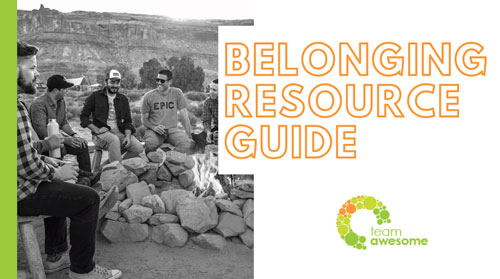While many companies have long been on their journey to improve team engagement, there are still plenty of organizations that are just getting started. And that is okay. I am here to meet you where you are and celebrate your interest to start examining your workplace and create change.
I have worked both in-house and with consulting clients on transforming team culture through measurement and action. Here are some key parts of the roadmap that I have seen guide teams to success time and again.
Measure it.
Start to find some Key Performance Indicators (KPIs) to measure regarding culture. Many companies do this through an annual (or other) team engagement survey, spot surveys, or polling. If you don’t have these insights to rely on, you can use information like turnover data and exit interview comments to help you understand your culture pain points. Once you place importance on people-focused metrics, you improve at being a people-focused organization.
If you ask, you must act.
One of the biggest pitfalls in engagement work is asking for feedback (via a survey or otherwise) and then taking no visible action on the feedback given. If you are going to ask, it is critical to back it up with follow-through. Asking and doing nothing is almost worse than not asking at all. Taking action on the feedback builds trust and momentum in the open-door culture and dramatically speeds up your success towards building the right culture.
Take the long view.
Particularly if you are at the start of your culture transformation journey, it helps to take the long view. For example, companies completing their first ever engagement survey will build a more sustainable culture when they think beyond the first year and low hanging fruit and consider how to make it part of the fabric of the company. Ask yourself, what is our one, two, and three-year plan for culture? How do all leaders in the organization become champions of the feedback so it doesn’t fall short as “just as HR initiative”?
As you evaluate progress, it can be difficult to measure intangibles regularly. Ask yourself, where were we a year ago? You will begin to recognize significant changes and feel good about progress looking at longer term increments. Culture evolution can be slow work, but stay the course.
Involve leaders and influencers to make it a movement.
While HR is usually responsible for starting and championing many team engagement processes, it is only sustainable when leaders across the organization walk the talk. Making sure that leaders and key influencers in the organizations are bought in and feel ownership of the culture is a critical strategy to ensure it is not something that only gets examined annually or when HR asks about it. HR may lead the process, but everyone owns the culture and employee experience. Everyone.
While these methods work well in a lot of settings, what they DON’T tell you is exactly what is important for your culture to focus on. That is because it is entirely unique to your organization. For example, communication might be a common area of focus, but exactly what that means and how you improve it must be tailored to your distinct culture. That is the hard work of culture that can’t be hacked, shortcut, or sidelined. And with good framework and a commitment to the long haul, it will work and be totally worth it.
About the author:
Katie Rasoul is the Chief Awesome Officer for Team Awesome, a leadership coaching and culture consulting firm. Find out more by visiting www.teamawesomecoaching.com or join the Team Awesome Community for awesomeness coming straight to your inbox. Follow Team Awesome on Facebook and Twitter.



Great, concise overview of how to get started with increasing engagement and commitment! Nice job Katie!